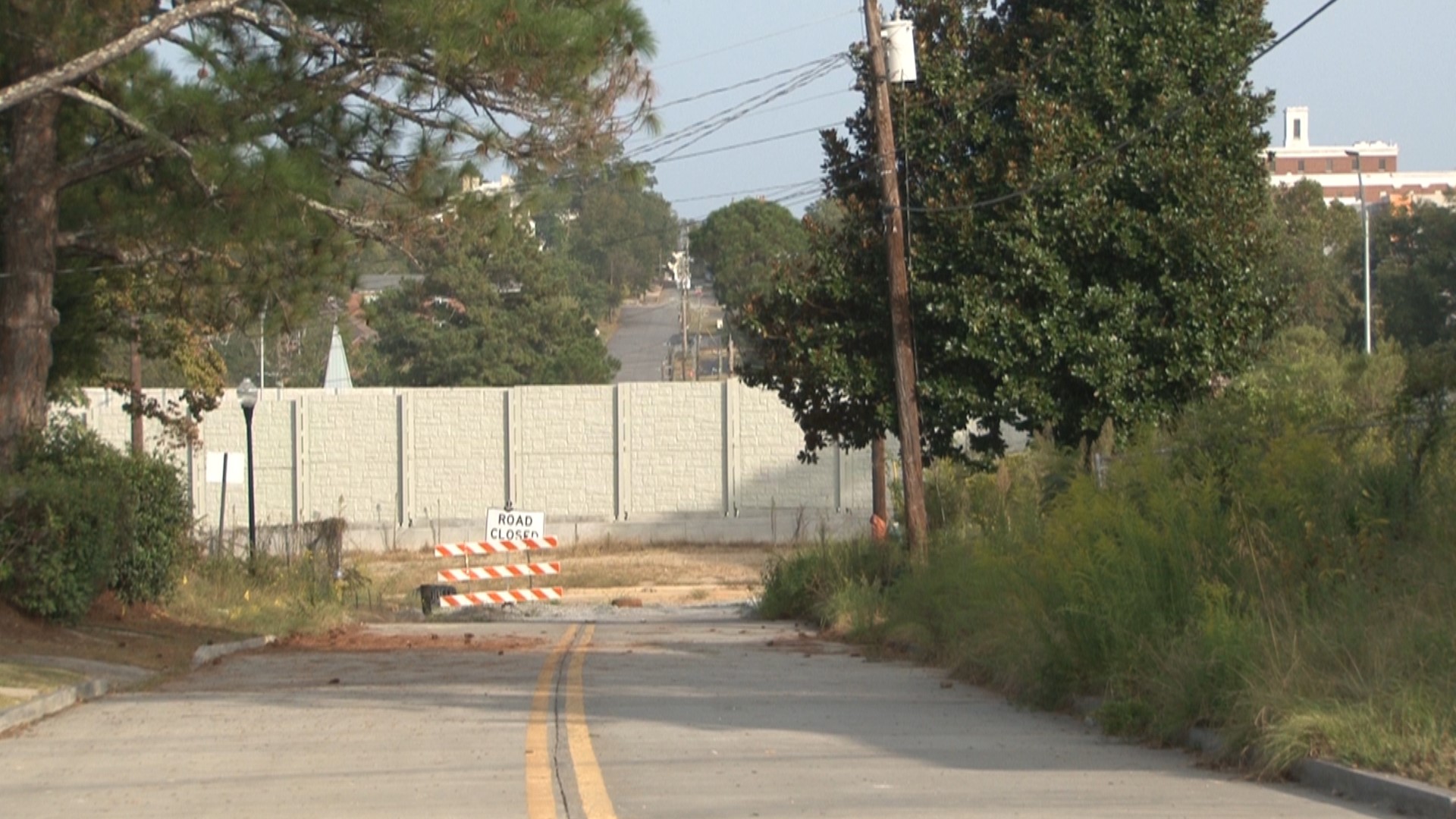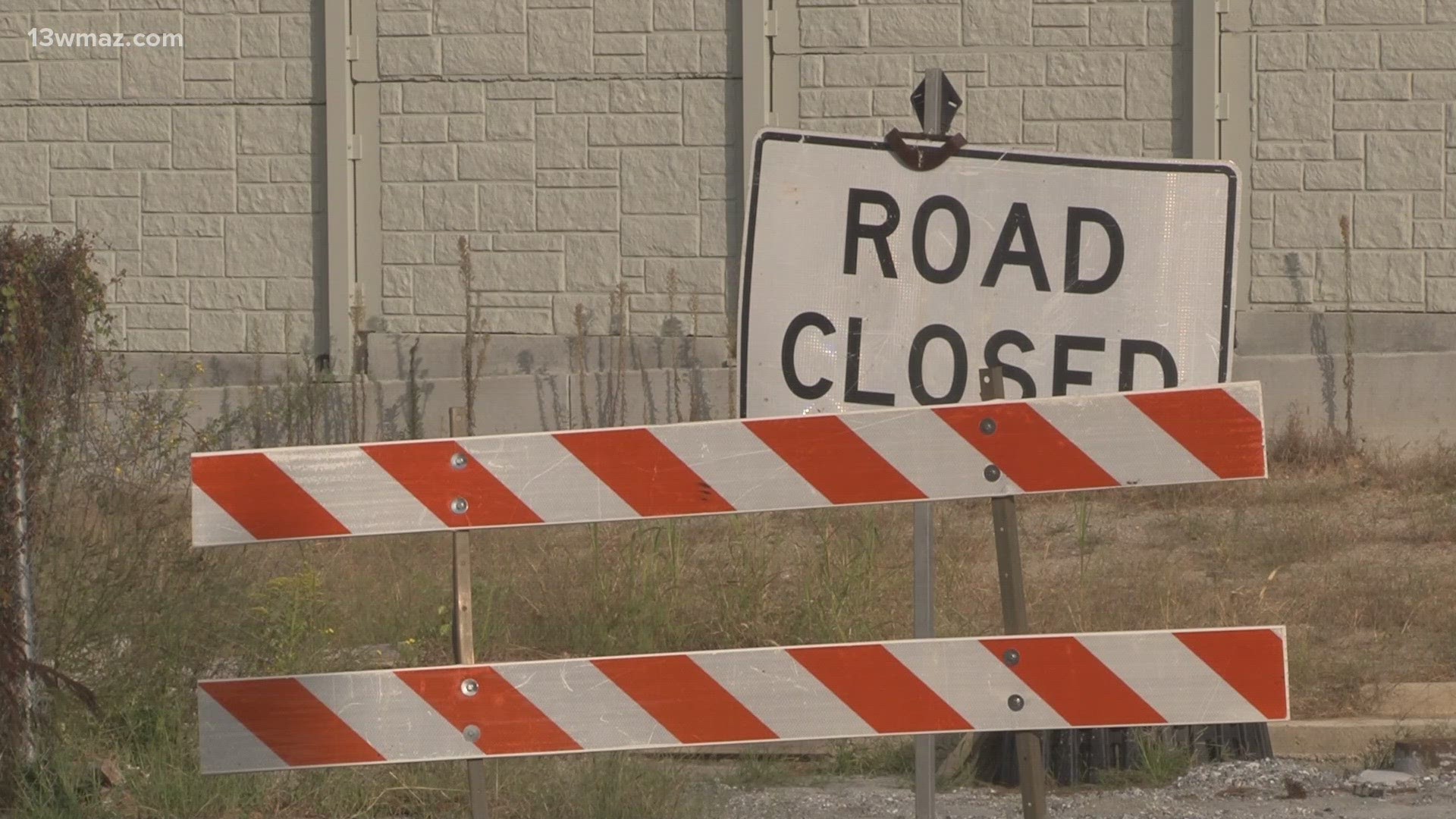I-16/I-75 construction is frustrating for drivers. But records show it may be dangerous, too
For one neighborhood, the frustration with the interstate pre-dated the construction in 2017. It dates back to when the interstate first opened 60 years ago.

A 60-Year History When an interstate ripped Pleasant Hill in two
Traffic, constant lane changes and never-ending construction. If this is how you think of the I-16 and I-75 interchange, you're probably not alone.
But for the people of Pleasant Hill, the frustration started long ago.
"At the time, I really didn't understand," Lucille Williams said. "We were like, 'We don't even need an interstate.'"
It's been 60 years since a new interstate started snaking its way through Pleasant Hill, but the residents of the area like Williams are a bridge through time.
"I was born in '61," Wiliams said. "The first interstate came in like '62."
At that time, Pleasant Hill was a rich, vibrant community. It's an area Williams loved growing up.
"You could go to Ms. Mary's house and get some water. You could go to Mr. Oliver's house and get something to drink," Williams said. "You know, everybody made sure that everybody was ok."
But as Williams grew so did the interchange.
When it was finished, I-75 and I-16 cut Pleasant Hill and Williams' world in half. Over that time, friendships faded.
"We wouldn't go over there and they stopped coming over here," Williams said. "Because until they built the bridge for you to come across, you had to come across the interstate. And a lot of parents didn't want kids coming that way."
The Vision Inside the Changes
For years, Pleasant Hill and the Georgia Department of Transportation worked together on plans to transform the interchange.
Ideas floated around for quite some time and, finally, they broke ground in 2017.
Since then, Gina Snider with GDOT says crews have worked nonstop.
"The basic mass of scope is to widen and reconstruct I-16 and I-75," Snider said.
Work has gone on for years to improve the roadway and make it safer. But during that time, the number of accidents has not reflected that.
Accidents, traffic and disappearing lanes were some of the main reasons for the work.
Between 2005 and 2015, GDOT data showed 975 accidents within the interchange — about one every four days. One person died, and 365 people were injured.
Let's compare that to the most recent data we have.
In an analysis of over 21,000 Bibb County accident reports over four years, 13WMAZ found a large increase. We looked at accident reports from January 2018 to December 2022.
Then, we took that data and isolated the accidents to the construction zone. We defined the construction zone from the beginning of I-16 to the Coliseum Drive exit and between exits 163 and 167 on I-75.
In that stretch over four years, there were 2,039 accidents. That is equivalent to more than one a day. In those injuries, 525 people were hurt and four people died.
It's a drastic difference, but Snider says the goal is to continue improving the interchange and hopefully making it safer.
"Basically, you'll have a whole new interchange out there," Snider said. "It's going to change the complete look and mobility of that area. People coming up from Savannah. All those trucks coming up from the port. It's going to make a huge difference."
Looking to the Future Hope for Pleasant Hill
Back in Pleasant Hill, Williams says that she is optimistic.
"Once it's completed, I think it'll be good," Williams said.
But when it is completed is a completely different story.
For years, we reported the project would be complete within eight- to 10-years, and GDOT never contradicted that. But now, GDOT says all construction should be done by 2030; 13 years later.
"We are on track for the entire project," Snider said. "That might have been phases. Because we have six phases."
Snider says most of the road work will be complete by 2026, nine years after breaking ground. The final phase of the project is mostly railroad construction.
Take a look at the blueprint:
"There's a lot of things being touched. From like 43 bridges to 51 retaining walls," Snider said. "It's going to take a while. But the end result will transform Macon-Bibb."
The original interchange transformed Pleasant Hill.
"We felt more safer here," Williams said. "You've got a lot of people who have moved away that I think probably would have stayed."
Instead of pondering what could have happened, Williams chooses to look forward.
She has dreams and aspirations for Pleasant Hill.
"Building more houses and fixing up the houses and getting a lot of blighted houses torn down, and just keeping the community up," Williams said. "We pull together."
Williams believes it will all happen. The interchange will just be there too.
Williams hopes today's highway expansion brings positive change in a neighborhood where that same idea once tore it apart.
"It's there, so we just have to make it work," Williams said. "We can't go nowhere but up. And that's where we're headed."


